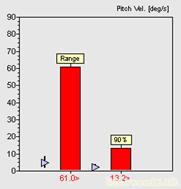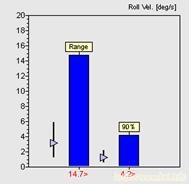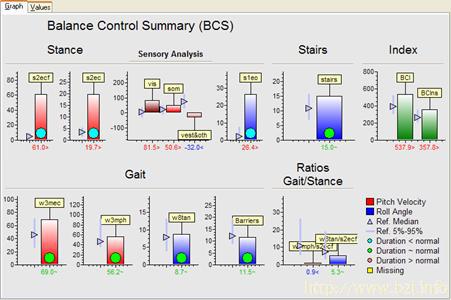Bilateral Peripheral Vestibular Loss
Age at test 38 |
||
| |
||
| Key Signs: | ||
|
Knowledge of the pattern of balance control for this patient with a long-term loss is important
when considering results of patients simulating a balance problem. Clearly this patient has
compensated well but still has difficulties with control of trunk pitch standing eyes closed
(see traces below). Note how the patient really tries to rapidly correct his backwards falling
(pitch trace deflection downwards). Both pitch and roll velocity are abnormal. Contrast this
with pa-tient results for a non organic disorder below. The simulator slowly falls forward
in the pitch direction only (see case below). Test results for 1-legged stance in the bilateral
loss patient also indicate instability. Trunk pitch velocity when walking, eyes closed, and roll
angle when walking up and down stairs are borderline normal. Standing on two legs, eyes closed, on foam 


|
||
| Summary Data: | ||
|
The sensory analy-sis ratio "vestibular" clearly indicates a deficiency in the use of vestibular
balance control signals. Re-habilitation should concentrate on im-proving balance control
during diffi-cult gait tasks.
|
||
| Index: | ||
Confirms this classi-cal type of bal-ance deficit as the patient has a value outside the normal refer-ence range.
|
||
|
|
||
|
|
| [Installation] [Download] [Manual] [Reporting] [Publications] [Stance Tests] [Gait Tests] [About] |
|
|
| ©
2004-2012 Balance International Innovations GmbH 15.11.2012 |